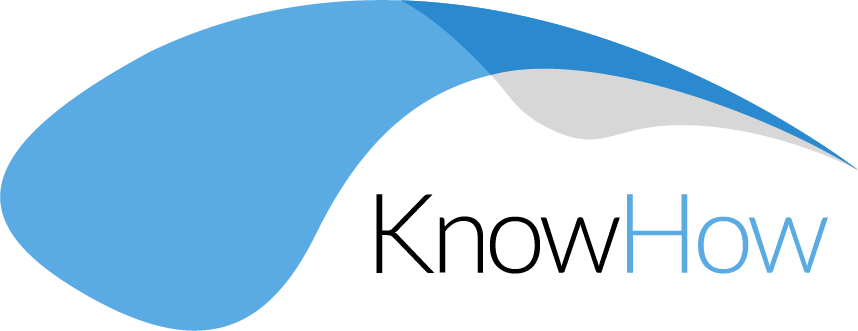Employee engagement tools are essential digital platforms designed to enhance employee motivation, satisfaction, and productivity. By monitoring performance and measuring engagement levels, these tools help businesses reduce employee turnover and improve organisational culture. Effective use of employee surveys and recognition programmes also contributes significantly to overall employee satisfaction.
Features such as real-time surveys, pulse surveys, and AI-driven analytics facilitate streamlined feedback and performance tracking, while automated workflows and AI tools enhance efficiency.
Choosing the right employee engagement tool involves evaluating its feature set, integration capability, and user experience to ensure alignment with organisational needs and HR software. These tools are vital for increasing workplace productivity, improving retention rates, and fostering a culture of open communication. Consider factors such as employee lifecycle management and employee metrics for better alignment with business objectives.
With a variety of options available, including tools tailored for remote teams, businesses can access real-time insights to make informed decisions, address challenges, and boost overall engagement effectively. Engagement software and communication tools play an essential role in facilitating knowledge sharing and improving team dynamics.
What are employee engagement tools, and why are they important for businesses?
Employee engagement tools are digital platforms designed to boost employee motivation, satisfaction, and productivity by addressing specific employee needs and workforce engagement.
These tools are important for businesses as they help monitor employee performance, measure engagement levels, and reduce employee turnover, ultimately contributing to business success.
Employee engagement tools facilitate streamlined feedback and improve organisational culture while enhancing employee experience and customer experience.
What features should you look for in tools to monitor employee engagement?
Tools to monitor employee engagement should include features such as real-time surveys, pulse surveys, and AI-driven data analytics for monitoring and feedback. Integrating employee net promoter score (eNPS) can provide additional insights into engagement levels.
Key features include automated feedback collection and performance tracking, assisting HR teams in improving employee satisfaction and engagement. Natural language processing (NLP) tools can help in feedback analysis and sentiment detection.
How can tools to monitor employee engagement improve workplace productivity?
Tools to monitor employee engagement improve workplace productivity by providing insights into employee motivation and performance.
These tools help identify areas for improvement and enable targeted interventions, increasing employee involvement and commitment.
Using engagement tools, organisations can track employee sentiment, collaboration, and job satisfaction, leading to higher productivity levels.
Real-time metrics allow leaders to quickly adjust strategies, addressing issues such as burnout and disengagement proactively.
What are the top employee engagement monitoring tools available in the market?
Top employee engagement monitoring tools include Gallup, Qualtrics, Culture Amp, Empuls, and Weekdone.
These tools provide features for automated workflows, employee feedback, and engagement measurement.
Each tool offers unique capabilities to enhance employee satisfaction and performance.
How much do employee engagement monitoring tools typically cost?
Employee engagement monitoring tools typically cost between EUR 5 and EUR 20 per user per month, depending on features and organisation size.
Pricing models include subscription fees, tiered pricing, and one-off licences, which influence total cost.
What are the benefits of using surveys and feedback tools for monitoring engagement?
Surveys and feedback tools benefit employee engagement monitoring by providing real-time insights, measuring engagement levels, and identifying areas for improvement.
These tools enable proactive responses to employee concerns, fostering open communication and ongoing feedback.
Informed decisions based on survey data improve employee satisfaction and performance.
How can real-time analytics enhance the understanding of employee engagement levels?
Real-time analytics enhance understanding of employee engagement by providing immediate access to data and performance metrics.
Real-time insights allow HR teams to monitor employee sentiment trends and make timely interventions.
Leaders use real-time data to develop targeted engagement strategies, improving workforce engagement and reducing attrition.
What role does employee recognition play in monitoring engagement effectively?
Employee recognition plays a critical role in monitoring engagement by reinforcing positive behaviours, boosting morale, and fostering a sense of belonging among employees.
Recognition programmes enhance employee performance and commitment, creating a culture of appreciation.
Incorporating peer recognition into engagement strategies strengthens employee connections and encourages collaboration.
Effective recognition leads to higher levels of overall engagement and employee retention by fostering a culture of appreciation and positive communication.
How to choose the right employee engagement tool for your organisation?
Choosing the right employee engagement tool involves evaluating the feature set, integration capability, and user experience to ensure it aligns with your engagement goals.
Employee engagement tools must align with specific organisational needs, connect with HR software, and effectively measure engagement metrics. This alignment ensures long-term organizational improvement and achievement of business objectives.
Consider ease of use and scalability to ensure the tool supports long-term employee engagement objectives.
Are there tools specifically designed for remote employee engagement monitoring?
Yes, tools are specifically designed for remote employee engagement monitoring.
These tools include features such as virtual recognition programmes, pulse surveys, and integrated communication tools.
Examples of these tools include Slack for communication, 15Five for feedback and performance management, and Officevibe for employee pulse surveys.
These tools enhance communication, collaboration, and engagement among remote teams.
How can you integrate employee engagement tools with existing HR software?
Integrating employee engagement tools with existing HR software involves ensuring compatibility through APIs, setting up automated workflows, and enabling data sharing.
To integrate, first assess compatibility between the engagement tools and HR software. Then design automated workflows to synchronise data and reduce manual entry. Ensure employee feedback from engagement tools is accessible within the HR system.
What are the common challenges faced when using tools to monitor employee engagement?
Common challenges when using employee engagement tools include employee resistance, low engagement with tools, and difficulty interpreting collected data.
Organisations may struggle to maintain open communication and encourage honest feedback.
Overcoming these challenges requires a clear strategy and effective communication.
Can employee engagement tools help reduce turnover and improve retention rates?
Employee engagement tools help reduce turnover and improve retention rates by increasing employee satisfaction and commitment. By addressing employee attrition proactively, these tools contribute to a stable and motivated workforce.
These tools use feedback mechanisms and recognition programmes to create a fulfilling work environment, leading to lower attrition.
Research shows organisations using engagement tools report decreased turnover and improved job satisfaction.
Engagement tools foster loyalty and motivation, contributing to stable workforce retention.
How do you analyse and interpret the data collected from employee engagement tools?
Analysing and interpreting data from employee engagement tools involves collecting quantitative and qualitative feedback, using statistical methods to identify patterns, and performing sentiment analysis to gauge employee feelings.
Organisations collect data through surveys and interviews, analyse it for trends using statistical techniques, and visualise results with dashboards for easy understanding.
This process helps HR teams make informed decisions to improve engagement strategies.
What are the best practices for implementing employee engagement monitoring tools?
Best practices for implementing employee engagement monitoring tools include setting clear engagement objectives, integrating HR teams in the process, and providing comprehensive training for tool usage.
Continuous measurement and regular feedback collection help refine tools and enhance engagement.
Organisations should ensure tools align with the company culture and promote positive communication.
How can employee engagement tools facilitate a culture of open communication within a company?
Employee engagement tools facilitate a culture of open communication within a company by providing structured feedback channels for employees to express their thoughts and concerns.
These tools enable employees to communicate with colleagues and management, fostering transparency and encouraging dialogue. Features such as regular feedback, active participation, and cultural integration enhance communication and strengthen organisational culture.
Frequently Asked Questions
What are some popular tools to monitor employee engagement?
Some popular employee engagement tools include performance reviews, pulse surveys, and human resources software from companies like Qualtrics, Culture Amp, Empuls, and Weekdone. Tools like Slack, BlogIn, and Blink also help enhance employee integration and commitment.$
What are some popular tools to monitor employee engagement?
Some popular employee engagement tools to monitor employee engagement include surveys such as Gallup Q12, pulse surveys, focus groups, performance reviews, employee engagement software, and social media monitoring.
How do pulse surveys help in monitoring employee engagement?
Pulse surveys are short, frequent surveys that collect real-time feedback from employees. They help in monitoring employee engagement by providing timely data on workplace satisfaction, employee satisfaction, motivation, and overall engagement levels. These surveys often involve data analysis to generate actionable employee insights.
What is the benefit of using social media monitoring as a tool to monitor employee engagement?
Using social media monitoring as a tool to monitor employee engagement allows organizations to track employee sentiment, identify potential areas of improvement, and gather feedback in real-time. It also provides a more holistic view of employee engagement by capturing opinions outside of the workplace. This method aids the HR team in understanding the organizational culture and making informed leadership decisions.
How can focus groups be utilised for monitoring employee engagement?
Focus groups involve a small group of employees discussing their experiences and opinions on various aspects of the company. This tool can be used to monitor employee engagement by providing deeper insights into the reasons behind certain engagement levels and identifying specific areas for improvement. Additionally, focus groups can offer valuable feedback on career development and employee rewards.
Do performance reviews serve as effective tools for monitoring employee engagement?
Performance reviews can serve as effective tools for monitoring employee engagement if they include questions or metrics related to engagement. They can also provide valuable feedback for employees and managers to improve engagement levels. Incorporating workforce metrics and employee data can make performance reviews more comprehensive. Companies like Goldman Sachs and Telefonica use such performance reviews effectively.
How can Gallup Q12 help in monitoring employee engagement?
Gallup Q12 is a research-based survey that measures employee engagement by asking 12 specific questions. It provides a comprehensive assessment of employee engagement and can help identify areas of strength and improvement within an organization. Companies like Zillow and organizations using AI tools for employee data analysis often leverage Gallup Q12 to enhance employee commitment and integration.

